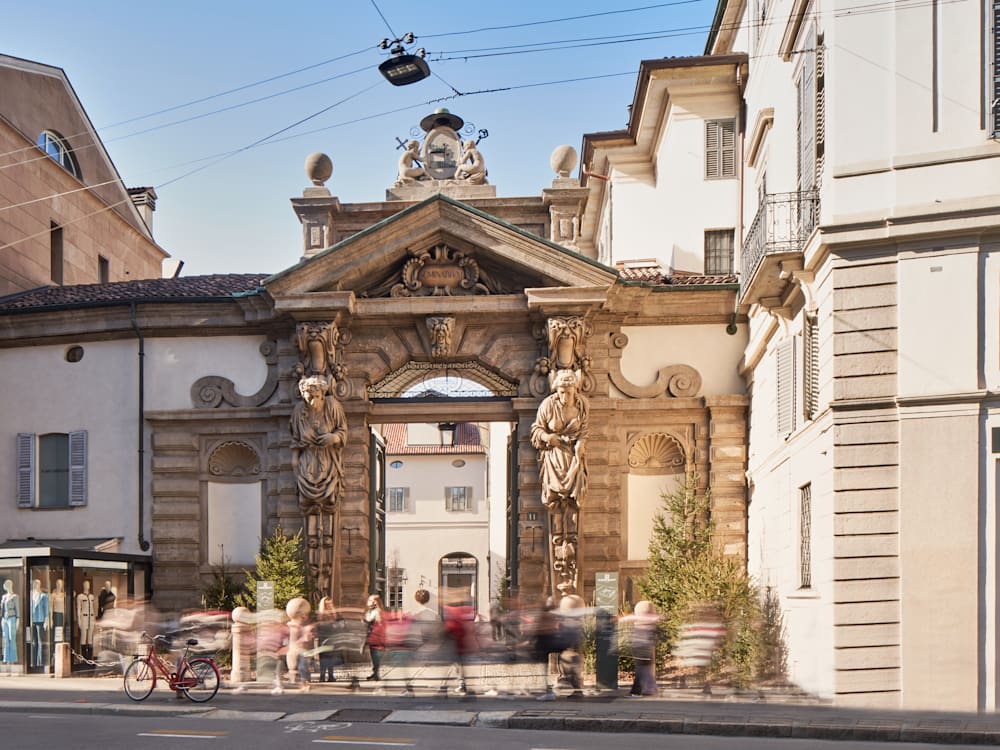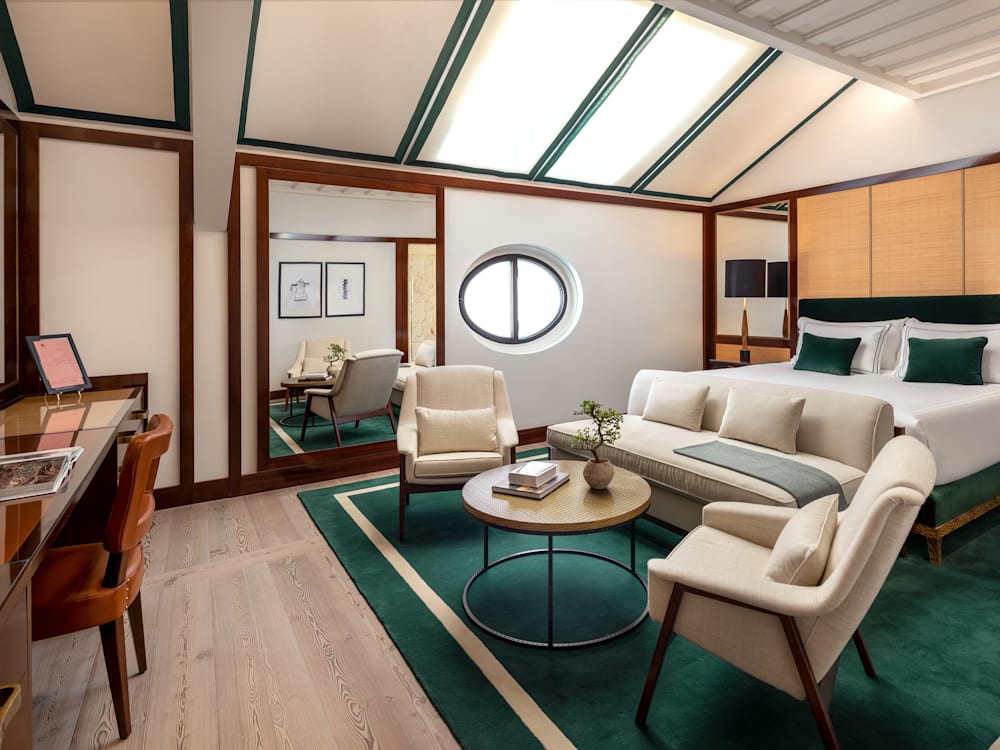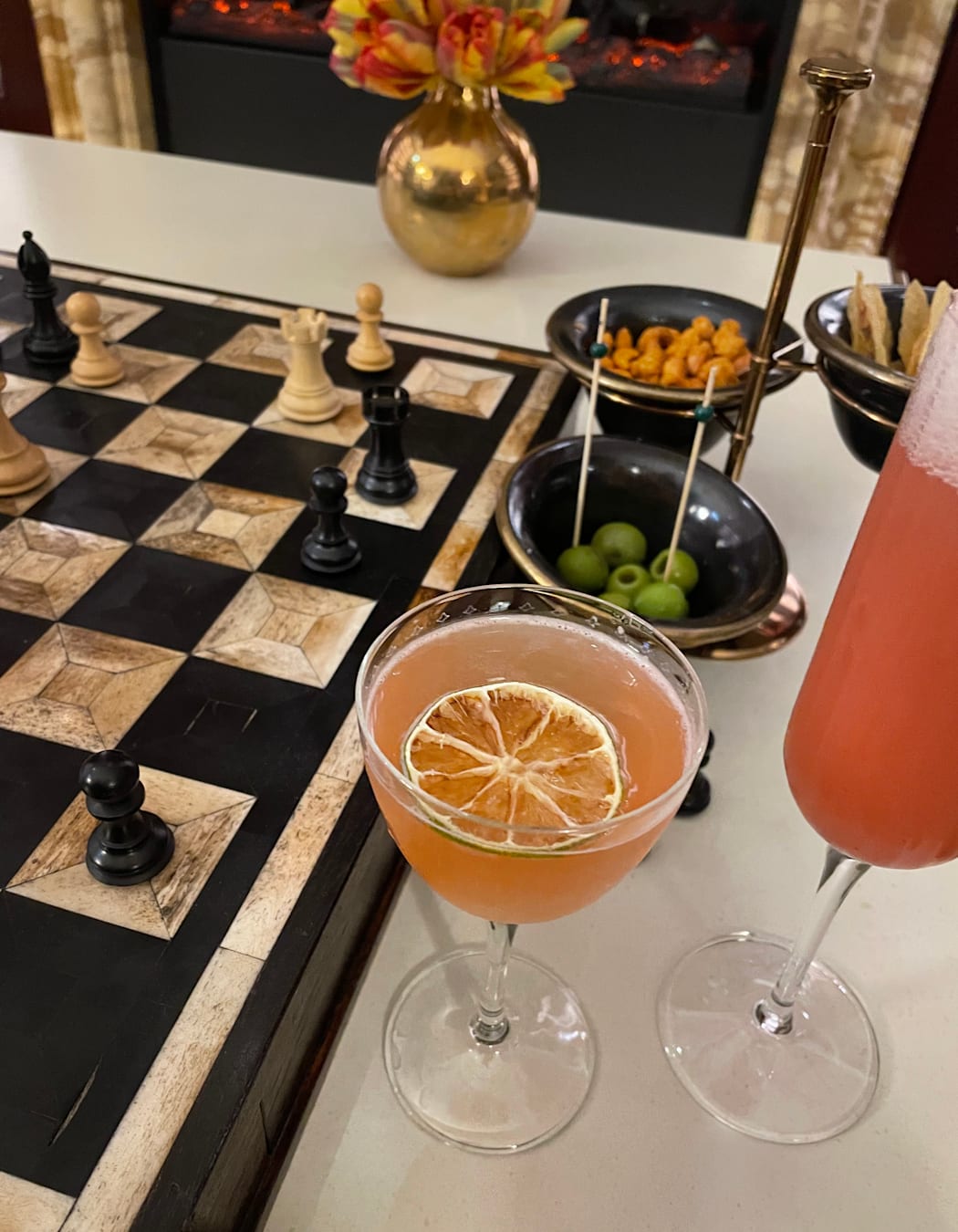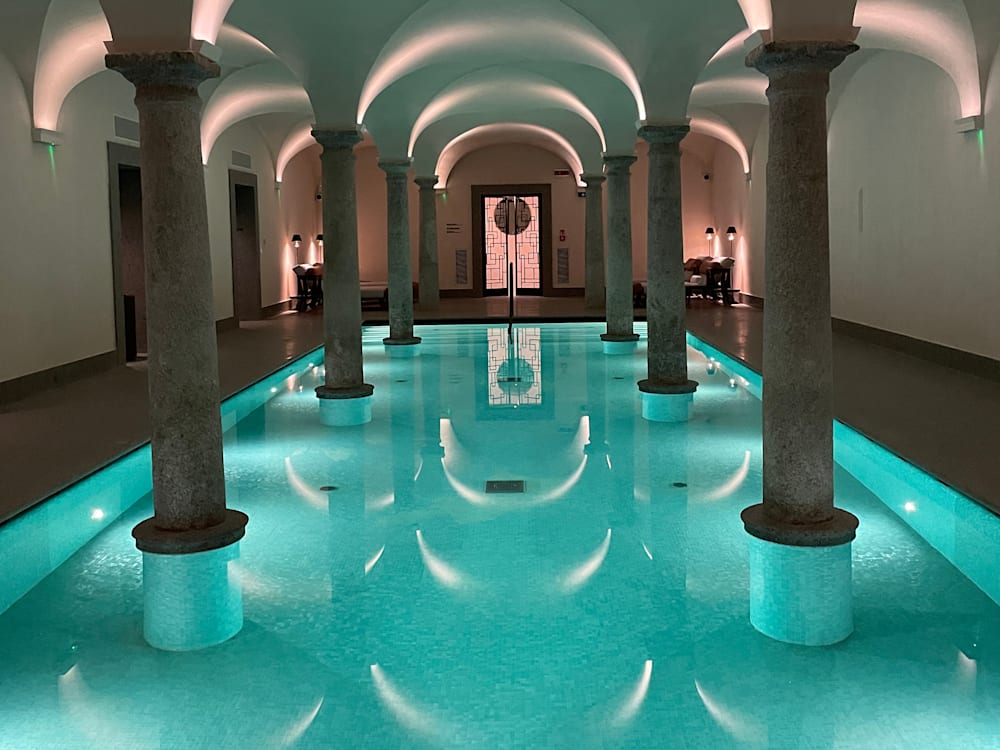If there is one experience that captures the essence of Milanese-ness, it’s walking down Corso Venezia on a drizzly February afternoon. There’s a crowd ogling the Sicilian-inspired display inside Dolce & Gabbana, men in tears-of-joy-level tailoring holding umbrellas up for their partners as they totter from Valentino to Versace, and assemblies of fur-clad sciure: Milanese ladies affectionately known throughout the city for their bouncy bouffants, strings of pearls and lifelong commitment to style.

In my own homage to sciura glam, I rock up to Portrait Milano – part of the luxurious Lungarno collection – in a pair of oversized sunglasses and a floor-length faux fur (thanks, nan). But, as I stop to admire the black-and-white photographs adorning the hallway, I somehow still feel underdressed. In them, the legendary Italian shoe designer Salvatore Ferragamo is flanked by leading ladies. He’s shopping for handbags with Sofia Loren, conducting a fitting with Audrey Hepburn, walking side-by-side with Greta Garbo. He’s leaning pensively on his forearm as he surveys his latest designs. He’s parading around Florence in a double-breasted jacket. He’s putting my imitation of Italian elegance to shame, frankly.
Salvatore, with his eye for detail and unparalleled craftsmanship, dressed everyone who was anyone, earning him the title “shoemaker to the stars.” Nowx, it’s his son, Leonardo Ferragamo, in the spotlight, who is pursuing Salvatore’s legacy through a trio of impeccable Portrait hotels in Rome, Florence, and now, here in Milan. Set in the heart of the Quadrilatero della Moda, the city’s fashion district ranks alongside New York’s Fifth Avenue and London’s New Bond Street as one of the world’s most sought-after shopping spots. A no-brainer location, you could say, for a hotel so steeped in fashion history.
But it took a decade of back-and-forth with the Catholic Church for the Ferragamo family to wrangle a lease on their dream building, a 16th-century seminary with a storied history of its own. Commissioned by Charles Borromeo, a former Archbishop of Milan, as part of the Counter-Reformation, the hotel is one of the oldest examples of the Lombard Baroque style, with a 32,000 square feet piazza at its centre. Since its priestly beginnings, the building has been used as a school, a wartime hospital, a prison, Napoleonic barracks, a parking lot and the studio of architect and designer Mario Bellini, before closing to the public altogether in the 1990s.

Today, Portrait Milano stands as more than a hotel. The ambitious restoration project undertaken by Ferragamo is also a love letter, reinstating a cherished piece of history back to the city and its people after more than 50 years. As Mr Smith and I enjoy a cold glass of Franciacorta in the gallery that trims the edge of the courtyard, we observe locals strolling through it, pointing to the historic colonnades and elegant landscaping, taking photos of this forgotten part of the city. But that’s not the only reason they frequent the square, which has multiple dining and retail outlets subtly embedded into the ground floor of this double-columned cloister.
As for us, we return to our Studio Deluxe room after a bright-and-early excursion to Fondazione Prada – the iconic cultural complex in the south of the city, designed by Rem Koolhaas and co-chaired by fashion power couple Miuccia Prada and Patrizio Bertelli – to find a silver tray of traditional pastries. I promptly hide them from Mr Smith lest the sugar-high ruin the nap I had planned, though apparently not well enough, and I emerge from a snoop around our Carrara-marble bathroom to see him licking the sugar dust from his fingers.
Fashioned by acclaimed architect and designer Michele Bönan, rooms are immediately striking, each dressed in rich walnut wood with velvet and lacquer accents, and licks of cardinal red or emerald green paint. On the wall hang framed sketches from Salvatore’s archive but his influence is perhaps most strongly felt in the details – stone door-frames, brass handles crafted by Florentine artisans, cloud-like Frette linens – all carefully considered.

While we were snoozing, the who’s who of Milan’s ‘golden triangle’ (a nickname for the fashion district that doesn’t need much decoding) were beginning to gather downstairs for aperitivo, a treasured cocktail ritual central to the city’s urban culture. Not that you could hear them; upstairs retains the hushed solitude of its ecclesiastical origins. We mix our own at the mirrored minibar – a bittersweet mix of Campari and vermouth – and sip it as we change from PJs to partywear before heading down to join them.
Once downstairs, we find the hotel’s 10_11 restaurant is a tribute to Milan’s golden age with design references to the city’s native sons, architect Piero Portaluppi and designer Gio Ponti. The kitchen of this sleek bar-slash-restaurant dishes out elevated Lombard classics with a focus on waste reduction and raw ingredients. Nowhere is this manifesto more evident than the restaurant’s signature dish – pasta in bianco – with handmade fusilli rigati served with 36-month-old Parmigiano Reggiano crusts. Yes, that’s it. No salt, no oil, no butter. As with fashion, so with food: sometimes, less is more.
Over in the library bar, backlit bookshelves are furnished with hefty tomes of design and fashion history – Prada, Yves Saint Laurent, Vivienne Westwood, Chanel – all stacked like sculptures and chosen by Ferragamo’s team of stylists. We play a rudimentary version of chess in front of the fireplace and drink cocktails until it’s time to retire, and, with that, our time in Italy’s moda metropolis has almost come to a close.

But there’s just enough time for one final morning dip in the newly opened Romanesque pool under the vaults of this former seminary. The Longevity Suite (named for the European ‘biohacking’ brand who run treatments here) specialises in all sorts of high-tech procedures. Appropriate, I guess, for such a timeless city. As we reluctantly approach check-out, I stop to admire the 1950s bas-relief by French sculptor Denis Morog which dominates the back wall of the lobby. It’s true that some things never age. Trends may come and go, but style is eternal, and if there’s anything this Portrait has taken from Salvatore’s legacy, it’s this.
Get the full picture of Portrait Milano, or check-out Geoff Cooper’s insider guide to navigating the most stylish time of the year…



